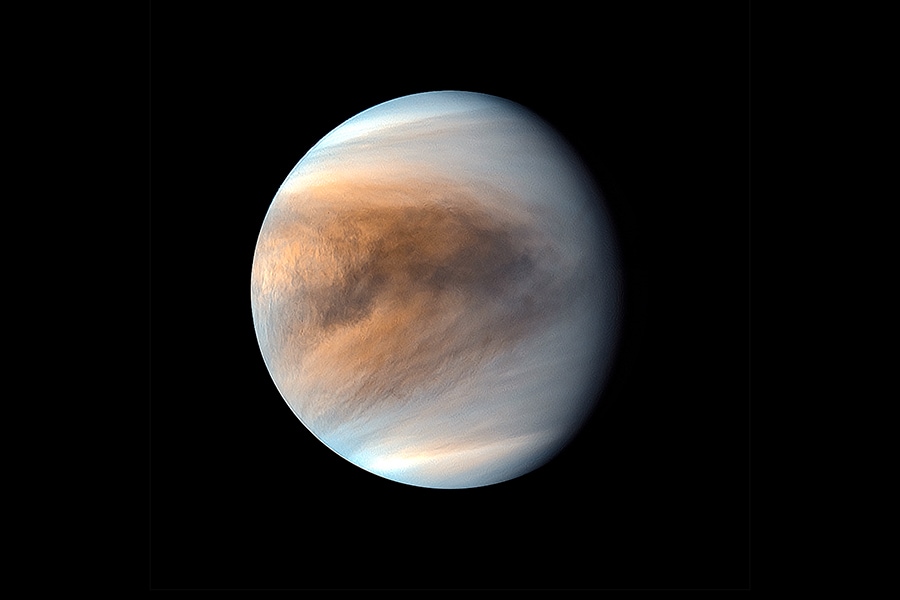
New NASA missions will study Venus, a world overlooked for decades
In the past year, a neglected Venus reentered the planetary limelight after a team of scientists claimed they had discovered compelling evidence for microbes living in the clouds of Venus where temperatures remain comfortably warm instead of scorching
 A synthesized false color image provided by PLANET-C Project Team/JAXA of Venus. On Wednesday, June 2, 2021, Bill Nelson, the NASA administrator, announced the agency’s latest choices for robotic planetary missions, both expected to head to Venus in coming years: DAVINCI+ and VERITAS; Image: PLANET-C Project Team/JAXA via The New York Times
A synthesized false color image provided by PLANET-C Project Team/JAXA of Venus. On Wednesday, June 2, 2021, Bill Nelson, the NASA administrator, announced the agency’s latest choices for robotic planetary missions, both expected to head to Venus in coming years: DAVINCI+ and VERITAS; Image: PLANET-C Project Team/JAXA via The New York Times
NASA is finally going back to Venus, for the first time in more than three decades. And a second time too.
On Wednesday, Bill Nelson, the NASA administrator, announced the agency’s latest choices for robotic planetary missions, both expected to head to Venus in the late 2020s: DAVINCI+ and VERITAS.
“These two sister missions both aim to understand how Venus became an inferno-like world capable of melting lead at the surface,” Nelson said during his “State of NASA” address to the space agency’s workforce.
Venus is in many ways a twin of Earth — it is comparable in size, mass and composition, and it is the planet whose orbit is the closest to Earth’s. But the history of the two planets diverged. While Earth is moderate in temperature and largely covered with water, Venus, with a dense atmosphere of carbon dioxide, is a hellishly hot 900 degrees Fahrenheit at the surface. After numerous missions by the United States and the Soviet Union to explore it in the 1970s, ’80s and ’90s, attention shifted elsewhere.
In the past year, a neglected Venus reentered the planetary limelight after a team of scientists using Earth-based telescopes claimed they had discovered compelling evidence for microbes living in the clouds of Venus today where temperatures remain comfortably warm instead of scorching.
©2019 New York Times News Service




